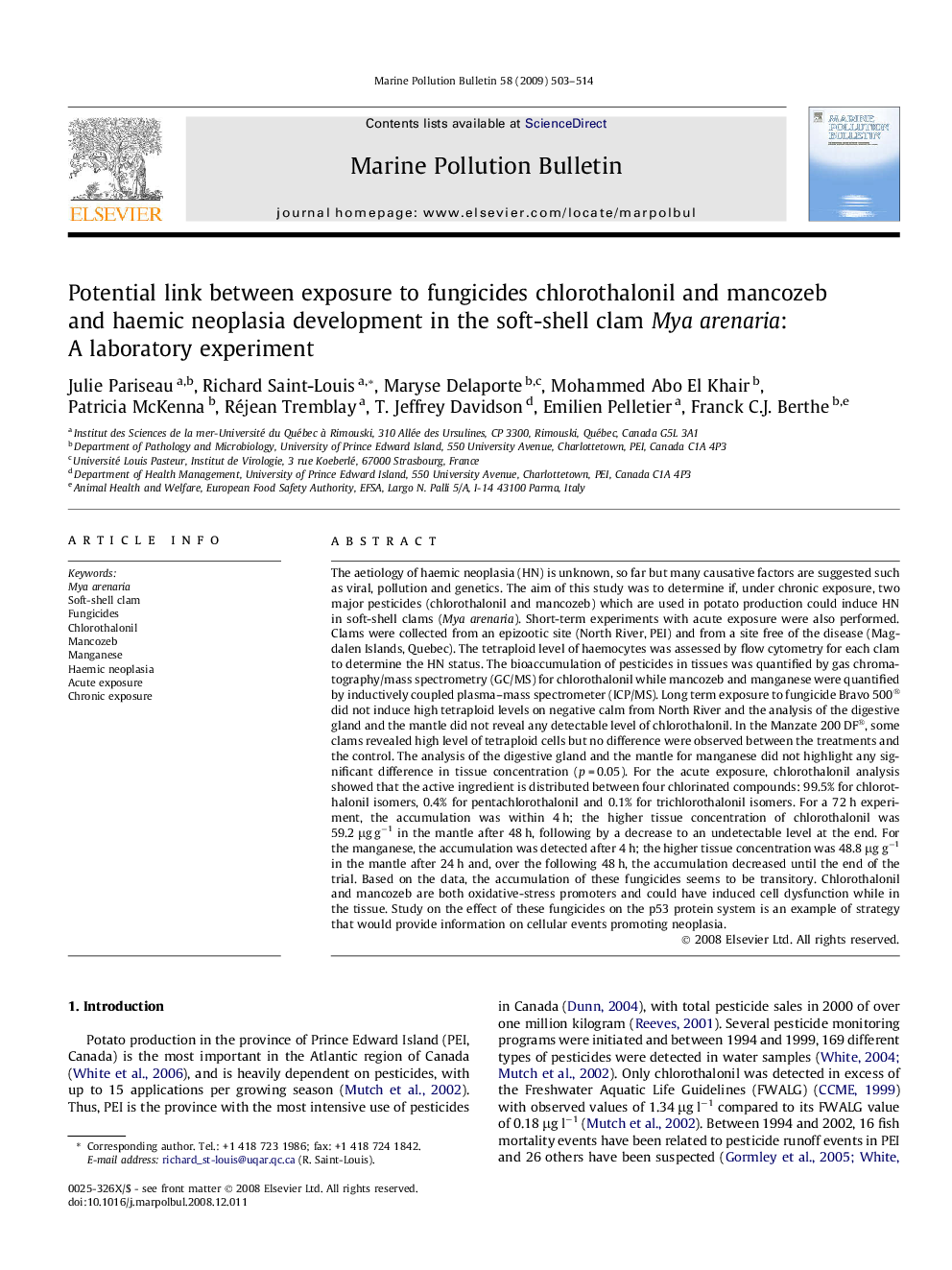| کد مقاله | کد نشریه | سال انتشار | مقاله انگلیسی | نسخه تمام متن |
|---|---|---|---|---|
| 4476878 | 1315699 | 2009 | 12 صفحه PDF | دانلود رایگان |

The aetiology of haemic neoplasia (HN) is unknown, so far but many causative factors are suggested such as viral, pollution and genetics. The aim of this study was to determine if, under chronic exposure, two major pesticides (chlorothalonil and mancozeb) which are used in potato production could induce HN in soft-shell clams (Mya arenaria). Short-term experiments with acute exposure were also performed. Clams were collected from an epizootic site (North River, PEI) and from a site free of the disease (Magdalen Islands, Quebec). The tetraploid level of haemocytes was assessed by flow cytometry for each clam to determine the HN status. The bioaccumulation of pesticides in tissues was quantified by gas chromatography/mass spectrometry (GC/MS) for chlorothalonil while mancozeb and manganese were quantified by inductively coupled plasma–mass spectrometer (ICP/MS). Long term exposure to fungicide Bravo 500® did not induce high tetraploid levels on negative calm from North River and the analysis of the digestive gland and the mantle did not reveal any detectable level of chlorothalonil. In the Manzate 200 DF®, some clams revealed high level of tetraploid cells but no difference were observed between the treatments and the control. The analysis of the digestive gland and the mantle for manganese did not highlight any significant difference in tissue concentration (p = 0.05). For the acute exposure, chlorothalonil analysis showed that the active ingredient is distributed between four chlorinated compounds: 99.5% for chlorothalonil isomers, 0.4% for pentachlorothalonil and 0.1% for trichlorothalonil isomers. For a 72 h experiment, the accumulation was within 4 h; the higher tissue concentration of chlorothalonil was 59.2 μg g−1 in the mantle after 48 h, following by a decrease to an undetectable level at the end. For the manganese, the accumulation was detected after 4 h; the higher tissue concentration was 48.8 μg g−1 in the mantle after 24 h and, over the following 48 h, the accumulation decreased until the end of the trial. Based on the data, the accumulation of these fungicides seems to be transitory. Chlorothalonil and mancozeb are both oxidative-stress promoters and could have induced cell dysfunction while in the tissue. Study on the effect of these fungicides on the p53 protein system is an example of strategy that would provide information on cellular events promoting neoplasia.
Journal: Marine Pollution Bulletin - Volume 58, Issue 4, April 2009, Pages 503–514